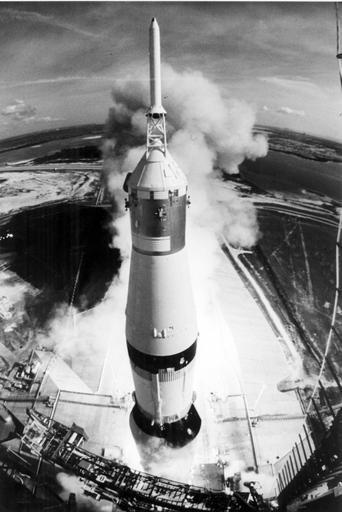MAKE A MEME
View Large Image

| View Original: | Apollo_11_Launched_Via_the_Saturn_V_Rocket-High_Angle_View.jpg (1026x1536) | |||
| Download: | Original | Medium | Small | Thumb |
| Courtesy of: | www.flickr.com | More Like This | ||
| Keywords: aviation aerospace spaceflight space exploration spaceexploration manned spaceflight mannedspaceflight national aeronautics and space administration nationalaeronauticsandspaceadministration nasa project apollo projectapollo apollo project apolloproject apollo program apolloprogram apollo north american aviation northamericanaviation north american rockwell northamericanrockwell naa grumman boeing saturn rocket saturnrocket saturn v saturnv douglas aircraft company douglasaircraftcompany douglas aircraft douglasaircraft douglas apollo 11 apollo11 apollo xi apolloxi neil armstrong neilarmstrong armstrong edwin 'buzz' aldrin edwinbuzzaldrin buzz aldrin buzzaldrin aldrin michael collins michaelcollins collins launch complex 39a launchcomplex39a lc-39a lc39a kennedy space center kennedyspacecenter ksc cape canaveral capecanaveral rocket launch rocketlaunch launch tower launchtower blackandwhite monochrome black and white Full Description: The Apollo 11 mission, the first lunar landing mission, launched from the Kennedy Space Center, Florida via the Marshall Space Flight Center (MSFC) developed Saturn V launch vehicle on July 16, 1969 and safely returned to Earth on July 24, 1969. The Saturn V vehicle produced a holocaust of flames as it rose from its pad at Launch complex 39. The 363 foot tall, 6,400,000 pound rocket hurled the spacecraft into Earth parking orbit and then placed it on the trajectory to the moon for man?s first lunar landing. This high angle view of the launch was provided by a ?fisheye? camera mounted on the launch tower. Aboard the space craft were astronauts Neil A. Armstrong, commander; Michael Collins, Command Module pilot; and Edwin E. Aldrin Jr., Lunar Module pilot. With the success of Apollo 11, the national objective to land men on the Moon and return them safely to Earth had been accomplished. UID: SPD-MARSH-7012482 Full Description: The Apollo 11 mission, the first lunar landing mission, launched from the Kennedy Space Center, Florida via the Marshall Space Flight Center (MSFC) developed Saturn V launch vehicle on July 16, 1969 and safely returned to Earth on July 24, 1969. The Saturn V vehicle produced a holocaust of flames as it rose from its pad at Launch complex 39. The 363 foot tall, 6,400,000 pound rocket hurled the spacecraft into Earth parking orbit and then placed it on the trajectory to the moon for man?s first lunar landing. This high angle view of the launch was provided by a ?fisheye? camera mounted on the launch tower. Aboard the space craft were astronauts Neil A. Armstrong, commander; Michael Collins, Command Module pilot; and Edwin E. Aldrin Jr., Lunar Module pilot. With the success of Apollo 11, the national objective to land men on the Moon and return them safely to Earth had been accomplished. UID: SPD-MARSH-7012482 | ||||